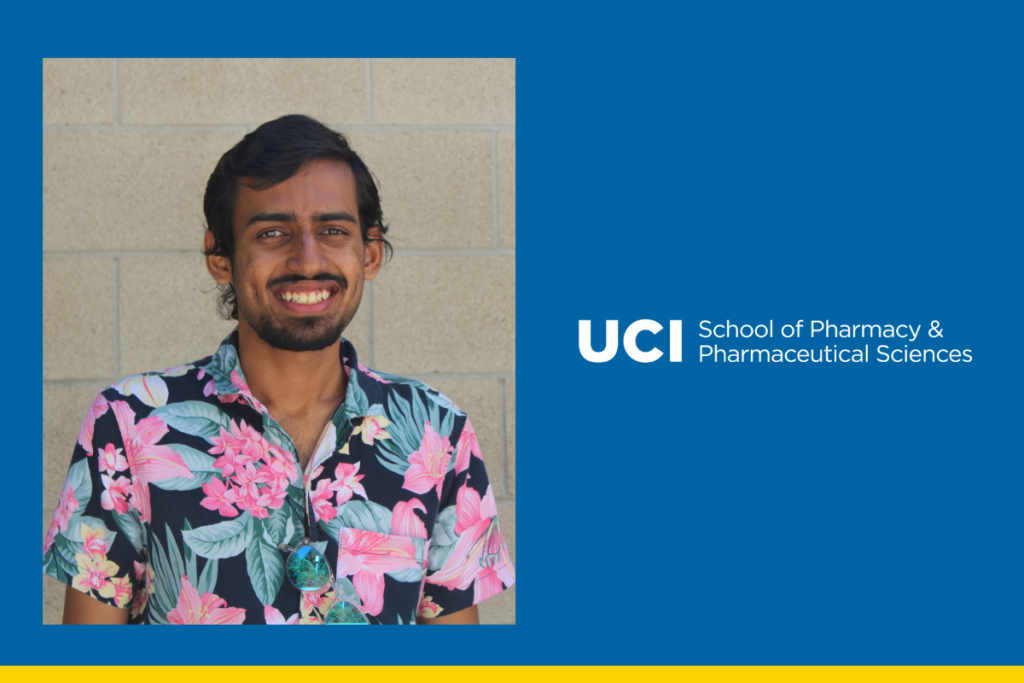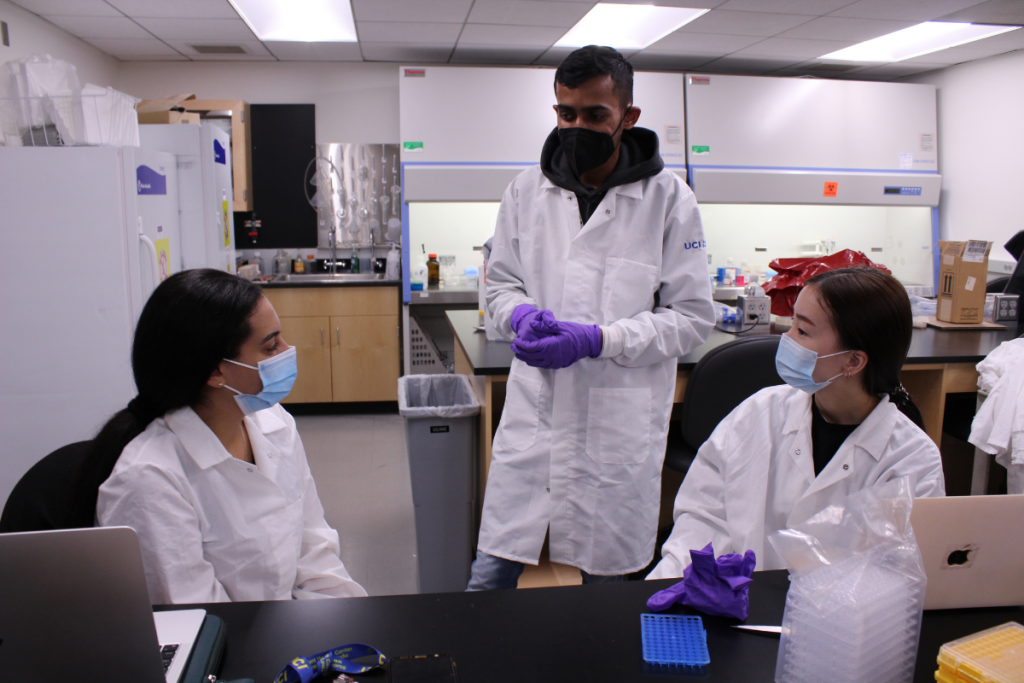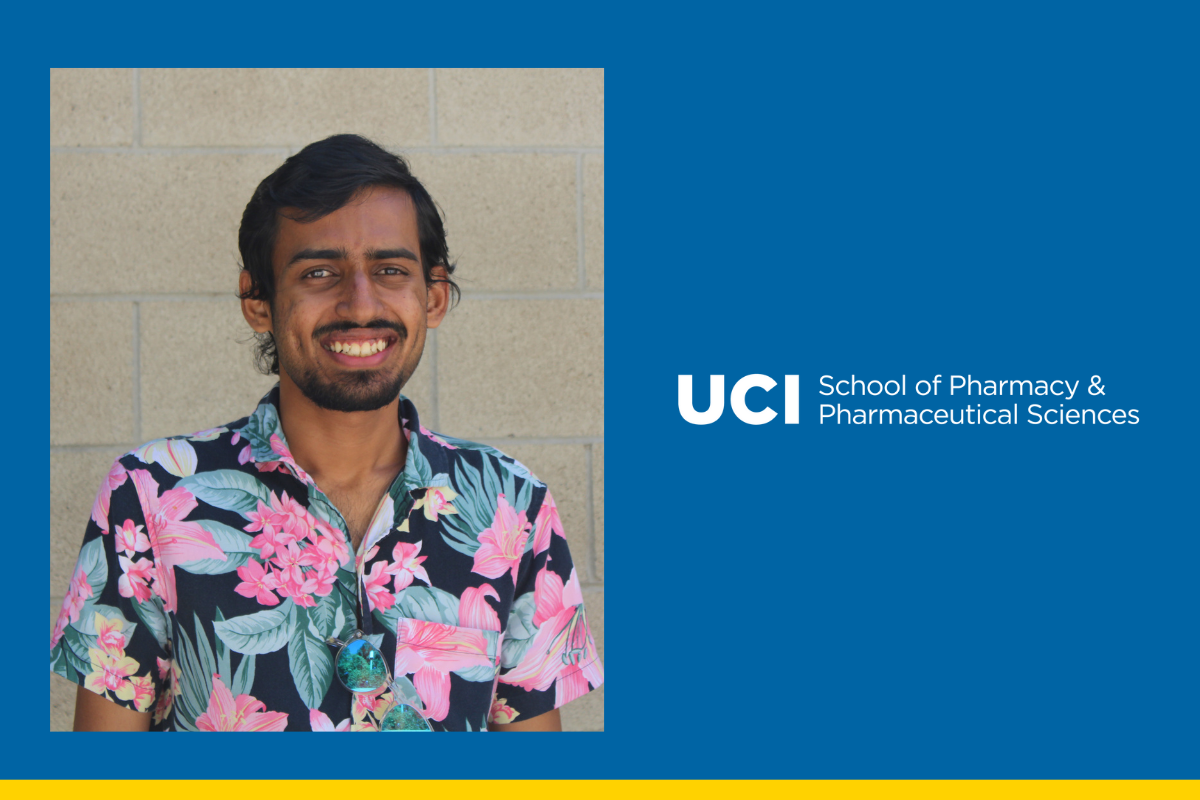
Aakankschit Nandkeolyar, a PhD student in the Pharmacological Sciences program at the UC Irvine School of Pharmacy & Pharmaceutical Sciences, wants to revolutionize the pharmaceutical industry using his background in automation and engineering.
“With an interdisciplinary degree like the one I’m working towards at UCI, I want to push the industry to its next revolution,” said Nandkeolyar. “Using artificial intelligence to find connections that would require hours of work from a human is exciting. This machine learning will help researchers look at different molecules and find more novel drug candidates.”
Many leading pharmaceutical companies use artificial intelligence technology to prompt research and development. Artificial intelligence in the pharmaceutical industry can be seen among many leading companies, including GlaxoSmithKline (GSK). This UK-based company is investing in machine learning and AI to automate drug discovery.
It was while Nandkeolyar was completing an internship with GlaxoSmithKline that he met and published a paper with David Mobley, PhD, professor of pharmaceutical sciences.
“Dr. Mobley drew me in [the Pharmacological Sciences PhD program] with the idea of screening compounds with automation and using computational methods to accelerate drug discovery.”
Aakankschit Nandkeolyar
Mobley coordinated a Statistical Assessment of the Modeling of Proteins and Ligands (SAMPL) challenge Nandkeolyar participated in while interning at GSK. The SAMPL challenge helps to improve the accuracy of current computational models to estimate associated physical properties that are useful for the design of new pharmaceutical products. By providing prospective validation and comparisons for computational methodologies, the SAMPL challenge accelerates progress in developing quantitative, accurate drug discovery tools.
“A number of computational labs try to provide a physical property,” said Nandkeolyar. “Then we get to see how close they are to the actual values.”
Computer-aided drug design methods have improved over time, along with the rapid growth of high-performance computing capabilities. However, their applicability in the pharmaceutical industry is limited due to insufficient accuracy. A key emphasis is on lessons learned, allowing participants in future challenges to benefit from modeling improvements made based on earlier challenges.

As an intern, Nandkeolyar collaborated with Mobley and worked with the data provided by GSK. He oversaw the collection of data and updated the progress of the project.
“I enjoyed my time with Dr. Mobley, so we stayed in contact,” said Nandkeolyar. “I finished my internship and was working on my master’s program when Dr. Mobley emailed me to ask how my search for a PhD program was progressing. That’s when he started to pitch UCI’s Pharmacological Sciences program.”
Originally from India, Nandkeolyar came to the U.S. in 2015 as an international student to study biomedical engineering. While studying at Drexel University in Pennsylvania, he completed a bachelor’s degree in biomechanics and a master’s degree in bioinformatics.
“Dr. Mobley drew me in with the idea of screening compounds with automation and using computational methods to accelerate drug discovery,” said Nandkeolyar. “Experimentalists and computational researchers are from two different worlds that are not well connected because they speak different languages, so I want to bridge their fields in the pharmaceutical industry.”
In the summer of 2021, Nandkeolyar completed a rotation at the Paegel Lab and has since moved on to rotate with the Mobley Lab, which he hopes to join, since he has expressed a deep interest in Mobley’s research. In addition, Nandkeolyar is also serving as a teacher’s assistant for PHRMSCI 174L, Biopharmaceutics and Nanomedicine Lab. He is also a member of the QT STEM (Queer and Trans Science Technology Engineering and Mathematics) student organization.
